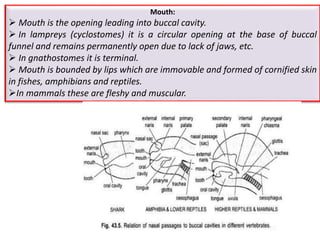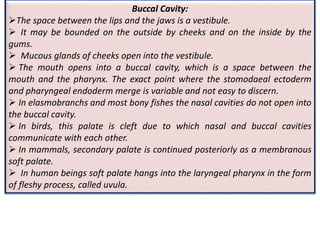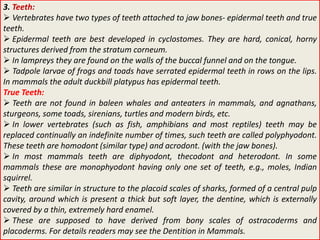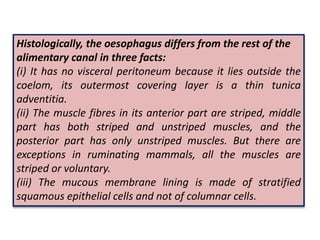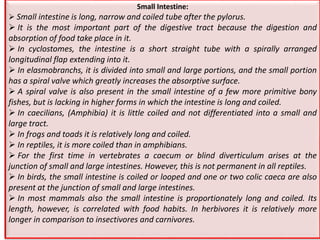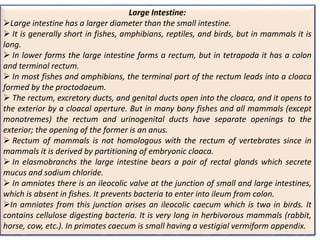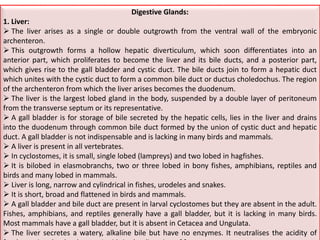The document provides a detailed comparative account of vertebrate digestive systems, particularly focusing on the embryonic development and adult anatomy of the digestive tract. It describes the structure and function of various components, including the mouth, buccal cavity, teeth, stomach, small intestine, and large intestine, highlighting their histological differences and evolutionary adaptations. Additionally, it discusses the development of associated glands and other derivatives that arise from the digestive system, emphasizing the complexity and variation across different vertebrate groups.





